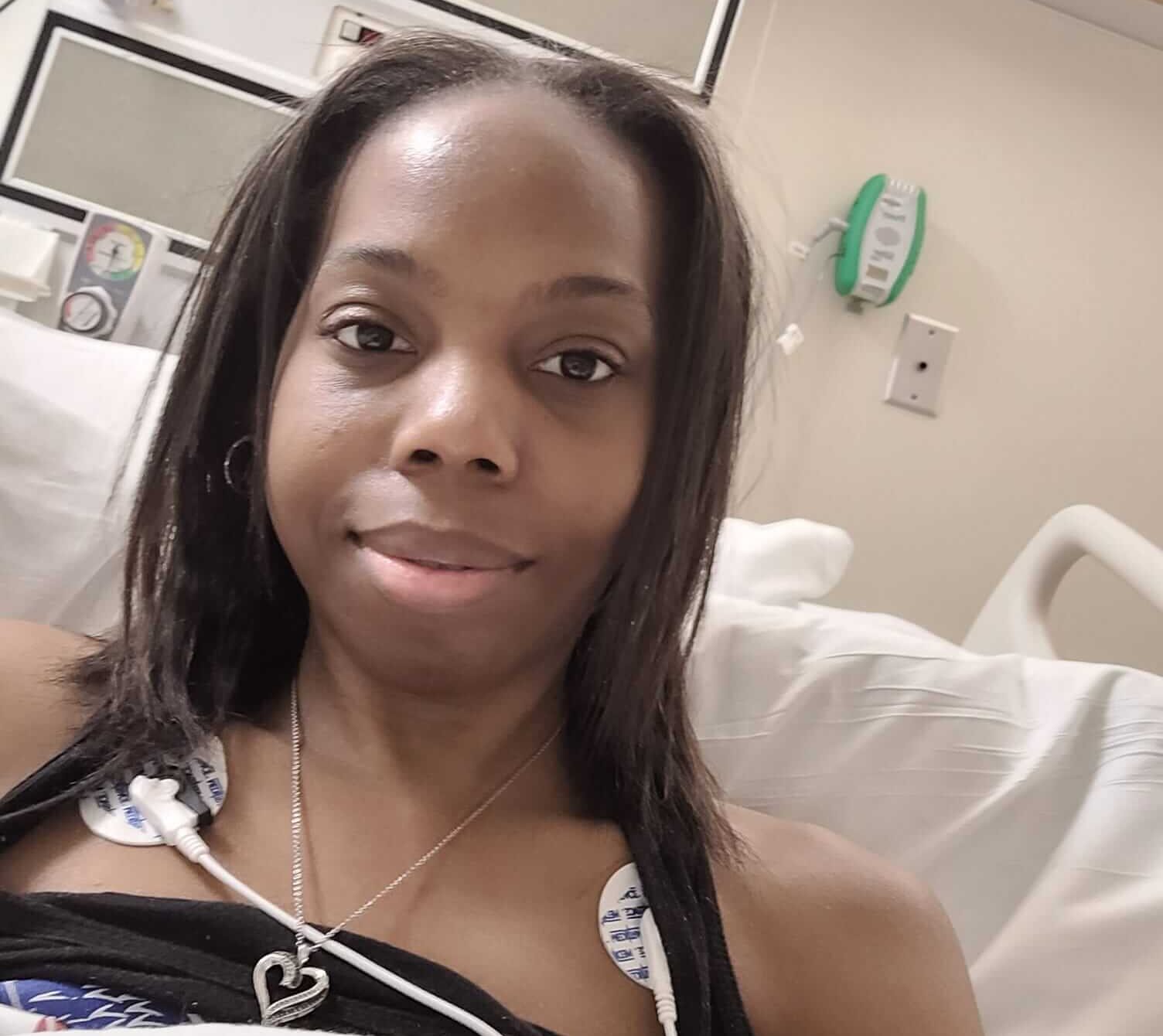👋 The news from Washington is disheartening: Nearly 2 million New Jerseyans stand to lose essential medical services if cuts to Medicaid federal funding being discussed take place.
Among those whose health and well-being would be severely threatened are the mothers and babies who the Burke Foundation and our many partners in the nonprofit community, government, and elsewhere support through efforts aimed at making sure all families can provide the nurturing and care needed to promote lifelong well-being.
Medicaid enables families that struggle to make ends meet — including new mothers, children, seniors, and people with disabilities — to obtain critical medical care. In the process, it provides a vital funding stream for hospitals, health clinics, and frontline providers, keeping crucial services available in our communities.
Burke launched its work on behalf of children and families 7 years ago with a focus on investing in community health programs that:
Deliver measurable improvements in health and well-being for families
Leverage public-private funding to create lasting impact
Are sustainable, scalable, and built to endure
Today, nearly all the efforts we support — including community doulas, HealthySteps, and CenteringPregnancy — depend on Medicaid. Potential cuts could devastate these programs, putting the providers who deliver them and the families whose health depends on them at risk.
That’s why we’re dedicating this month’s issue of Starting Early to Medicaid — its value, its impact, and its important role in public health in New Jersey.
Atiya Weiss
Executive Director, the Burke Foundation
1 big thing: Medicaid matters

60 years ago, President Lyndon B. Johnson signed legislation to make the U.S. a healthier place by creating 2 landmark programs:
Medicaid for people who couldn’t afford coverage, often because their jobs didn’t provide it
Medicare to insure everyone 65 and older
In 1997, CHIP (Children’s Health Insurance Program) was created to cover kids in families whose income exceeds Medicaid eligibility but is too low to afford private insurance.
And, in 2010, the Affordable Care Act further expanded Medicaid, allowing states to cover nearly all adults with incomes up to 138% of the Federal Poverty Level or about $43,000 per year for a family of 4. As of February 2025, 40 states and Washington D.C. had adopted this expansion, providing coverage to millions more Americans.
💡 Why it matters: President Johnson and Congress recognized that regular medical care prevents more expensive and serious health issues later on — a principle that’s just as true today.
Today, Medicaid:
Covers 1 in 6 adults and 2 in 5 children nationwide
Funds 3 in 5 nursing home residents and 2 in 5 births across the country
Pays for over half of all U.S. births in some states, making maternal and infant healthcare available to millions
⚙️ How Medicaid works: Medicaid is a state-federal partnership, meaning states rely on federal funding to supplement state governments’ contribution.
Washington matches state Medicaid spending based on a formula ranging from 50% to 77%, depending on the state
States finance their share through general revenues, taxes on insurers and healthcare providers, and other mechanisms
📉 What’s happening now: Congress is considering major Medicaid cuts, including:
Changing the formula, which could slash federal Medicaid support by up to $880 billion over the next decade
Shifting more financial responsibility to states, forcing them to 📈 raise taxes to make up for lost funds, ❌ cut services, or both, putting millions of people — especially those covered by Medicaid expansion — at risk
Bottom line: 💰 Medicaid is too big to fully fund at the state level. 💰 Cuts at certain levels would be impossible for states to make up. This wouldn’t just affect enrollees. It would disrupt hospitals, providers, and the entire healthcare system.
⏩ What’s next? Federal budget discussions underway could determine the future of Medicaid funding. Stay tuned.
2. Medicaid in New Jersey: A lifeline under threat

Medicaid — known in New Jersey as NJ FamilyCare — plays a critical role in ensuring access to healthcare, covering a wide range of people, from children and working families to seniors and individuals with disabilities. But proposed federal funding cuts could have ripple effects far beyond healthcare — endangering child safety, family stability, and New Jersey’s entire social services system.
🔬 Let’s take a closer look 🔬
Who gets Medicaid in New Jersey?
888,000 children and 964,000 adults, including pregnant and postpartum women, children, blind and disabled individuals, and seniors on fixed incomes
Low-paid working people who don’t receive insurance through their jobs
💰 Where does the money go?
Medicaid dollars flow to hospitals, clinics, doctors, and other healthcare providers to cover care for eligible patients.
Reimbursement rates are set by regulators and are typically lower than Medicare or private insurance
If federal funding is cut, providers could lose millions, leading to staff reductions, service cuts, and even closures — expanding “healthcare deserts” where care is hard to find
🚨 Impact of federal cuts on New Jersey
According to state Department of Human Services estimates, proposed Medicaid cuts could strip $2.2 billion to $9 billion from New Jersey’s healthcare system. Beyond the impact on enrollees, it would create a crisis for families, children, and state services.
🛑 Child safety at risk
“When families lose health insurance, they’re put in an impossible position — choosing between rent, food, and medical care,” says Katherine Stoehr, first deputy commissioner of the state Department of Children and Families. “That’s when kids are most at risk. If [family] budgets aren’t big enough to handle everything at the same time, stress levels skyrocket, and we know that’s directly linked to increases in child welfare concerns.”
Research shows that when healthcare access is compromised, reports of neglect and abuse to Child Protective Services increase
The NJ Children’s System of Care could lose $40 million in funding, severely reducing youth mental health and services for children with disabilities
Cuts to federal-state cost-sharing could threaten foster care stipends, adoption subsidies, and kinship care support, making it harder for families to provide stable homes for children
🏥 Ripple effects
Hospitals and providers serving Medicaid patients could lose millions in revenue, forcing them to lay off employees, reduce services, or shut down entirely
Cuts could also jeopardize New Jersey’s progress in maternal and infant health by reducing access to prenatal and postpartum care, doulas, and midwifery services
“We’ve spent decades researching how to prevent child maltreatment, and we know what works — concrete assistance like food, healthcare, and housing,” Stoehr says. “Taking those things away won’t save money in the long run. It will increase costs by driving families deeper into crisis and putting more children at risk.”
“Our nation’s social services were constructed over the course of nearly 100 years of work and have supported millions of children and families to thrive, innovate, and contribute to our communities,” Stoehr says. “We certainly hope everyone who cares about children is engaging with their Congressional delegation to speak up about what matters.”
⏰ The time is now: With federal budget discussions looming, the stakes couldn’t be higher. All New Jerseyans have the power to speak up.
3. Faces of Medicaid

That’s Medicaid, a project of the Robert Wood Johnson Foundation, uses storytelling to help increase awareness of how much Medicaid means to the health of nearly 80 million Americans. You can search this valuable resource by state or topic. Stories include:
Naomi, who enrolled in Medicaid after she lost her job when pregnant with her son Noah. Born prematurely at just 26 weeks, he lives with chronic and medically complex conditions that require round-the-clock care.
Toward the end of her pregnancy, Alicia was assigned a doula through Medicaid who guided her through the rest of her pregnancy and the birth of her son. She is now a certified doula herself.
Dominique from East Orange, NJ, was diagnosed with sickle cell disease at 6 years old and in the foster care system. Thanks to Medicaid, she sees a hematologist regularly, gets equipment and medications she needs to live at home.
“Without Medicaid and without insurance, I dread to see where I would be. I probably wouldn’t be alive because I wouldn’t have been able to afford the medicine.” —Dominique, East Orange, NJ
The roundup
📣 Speaking out: First Focus Campaign for Children offers a toolkit for how you can make your voice heard.
📉 Understanding the impact: The Georgetown Center for Children and Families features a collection of briefings explaining details and likely effects of specific Medicaid cuts.
✏️ Exploring Medicaid politics: Jay Chaudhury’s recent article “The Cultural Politics of Medicaid” breaks down how political views and cultural attitudes shape Medicaid policies, affecting who gets care.
💲 Navigating provider taxes: Say Ahhh! shares the importance of provider taxes that states rely on to help fund Medicaid. Budget gaps could lead to service cuts and higher costs elsewhere.
📊 Assessing potential changes: The Center on Budget Policy and Priorities’ recent report “Medicaid Threats in the Upcoming Congress” offers a comprehensive explanation of the dangers of Medicaid cuts.
